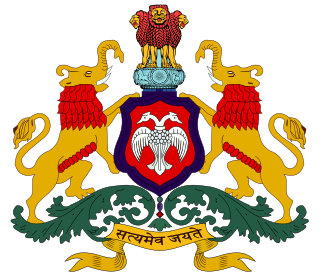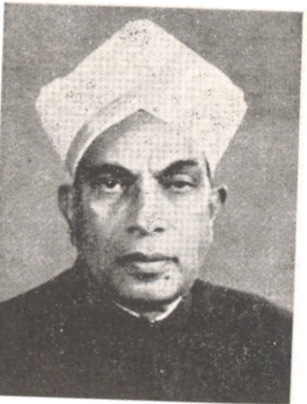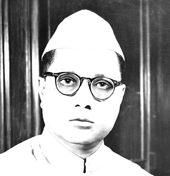Shivalingappa Rudrappa Kanthi was the Chief Minister of Karnataka for a brief period in 1962. He hailed from Lingayat caste in Hungund in Bagalkot district in the northern part of Karnataka. A member of the Indian National Congress (INC), he served as the Speaker of Karnataka Legislative Assembly from 1956 to 1962. Kanti was Chief Minister of the State for a brief period of 96 days in 1962. Later, as Education Minister in the S. Nijalingappa Cabinet he was instrumental in the establishment of Bangalore University and Kittur Rani Chennamma Sainik Schools.

The Karnataka Legislative Assembly, formerly the Mysore Legislative Assembly or Mysore Representative Assembly, is the lower house of the bicameral legislature of the southern Indian state of Karnataka. Karnataka is one of the six states in India where the state legislature is bicameral, comprising two houses: the Vidhan Sabha and the Vidhan Parishad.

Kalastavadi Puttaswamy was an Indian lawyer, and a senior Indian National Congress politician, who remained a member of Karnataka Legislative Assembly (1952–1977), three times from Mysore and subsequently twice from Chamundeshwari constituency, who also served as Minister of various ministries of Government of Karnataka, including Labour, Public Administration and Health & Housing. He has also remained member of the Constituent Assembly in 1948.

R. Gundu Rao was the Council of Ministers in Karnataka, a state in South India headed by R. Gundu Rao of the Indian National Congress (Indira).

S. M. Krishna ministry was the Council of Ministers in Karnataka, a state in South India headed by S. M. Krishna that was formed after the 1999 Karnataka elections.

Moily ministry was the Council of Ministers in Karnataka, a state in South India headed by M. Veerappa Moily that was formed after S. Bangarappa submitted resignation.
Ramakrishna Hegde ministry was the Council of Ministers in Karnataka, a state in South India headed by Ramakrishna Hegde of the Janata Party.
Ramakrishna Hegde ministry was the Council of Ministers in Karnataka, a state in South India headed by Ramakrishna Hegde of the Janata Party.
Ramakrishna Hegde ministry was the Council of Ministers in Karnataka, a state in South India headed by Ramakrishna Hegde of the Janata Party.

D. Devaraj Urs was the Council of Ministers in Karnataka, a state in South India headed by D. Devaraj Urs of the Indian National Congress (Indira).

D. Devaraj Urs Ministry was the Council of Ministers in Mysore, a state in South India headed by D. Devaraj Urs of the Indian National Congress.
Veerendra Patil was the Council of Ministers in Mysore, a state in South India headed by Veerendra Patil of the Indian National Congress.

Third S. Nijalingappa Ministry was the Council of Ministers in Mysore, a state in South India headed by S. Nijalingappa of the Indian National Congress.
B. D. Jatti Ministry was the Council of Ministers in Mysore, a state in South India headed by B. D. Jatti of the Indian National Congress.

Second S. Nijalingappa Ministry was the Council of Ministers in Mysore, a state in South India headed by S. Nijalingappa of the Indian National Congress.

First S. Nijalingappa Ministry was the Council of Ministers in Mysore, a state in South India headed by S. Nijalingappa of the Indian National Congress.

Kadidal Manjappa Ministry was the Council of Ministers in Mysore, a state in South India headed by Kadidal Manjappa of the Indian National Congress.

Kengal Hanumanthaiah Ministry was the Council of Ministers in Mysore, a state in South India headed by Kengal Hanumanthaiah of the Indian National Congress.

K. C. Reddy Ministry was the Council of Ministers in Mysore, a state in South India headed by K. Chengalaraya Reddy of the Indian National Congress.













